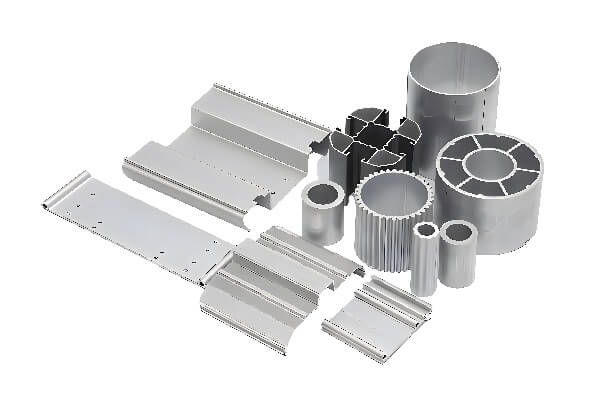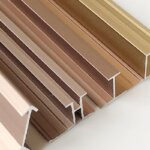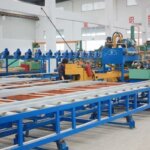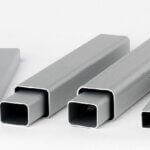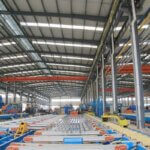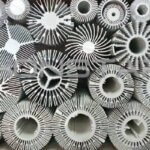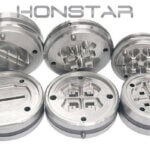Custom aluminum extrusion, get your project off the ground
Custom aluminum extrusion, get your project off the ground
Custom aluminum extrusion is a manufacturing process that transforms raw aluminum into specific shapes, catering to unique project requirements.
Unlike standard extrusions with pre-defined shapes, custom versions offer tailored cross-sectional designs based on your needs.
Custom aluminum extrusions can be a great way to get your project off the ground.
They are versatile and can be used in a wide variety of applications, from building furniture to creating frames for machines.
Engaging in a custom aluminum extrusion project can offer numerous advantages, helping to get your project off the ground more easily.
Here are some key benefits that custom aluminum extrusion brings to various industries and applications:
Design Flexibility:
Custom aluminum extrusion allows for the creation of complex and customized shapes that precisely meet the requirements of your project.
This design flexibility ensures that your components or structures can be tailored to perform optimally.
Cost-Effective Production:
The initial tooling costs for custom aluminum extrusion are generally more affordable compared to other manufacturing processes, such as die casting.
This cost-effectiveness is especially beneficial for projects with unique design requirements and lower production volumes.
While the initial cost of creating a custom die may be high, aluminum extrusions can be a cost-effective option in the long run, especially for high-volume projects.
Material Efficiency:
Aluminum extrusion is known for its material efficiency, minimizing waste during the manufacturing process.
This efficiency not only contributes to cost savings but also aligns with sustainability goals.
High Production Speeds:
Once the initial tooling is set up, the extrusion process itself is fast, enabling efficient mass production.
This can be particularly advantageous if you need to meet tight deadlines or scale up production quickly.
Lightweight and High Strength:
Aluminum extrusions are inherently lightweight, making them suitable for applications where weight is a critical factor.
Despite their low weight, aluminum profiles can offer high strength, providing a favorable strength-to-weight ratio.
Strength and durability:
Aluminum is a strong and lightweight material that is resistant to corrosion.
This makes it a good choice for projects that will be exposed to the elements or that need to be able to withstand a lot of wear and tear.
Corrosion Resistance:
The natural oxide layer on aluminum provides excellent corrosion resistance.
This is especially important for projects exposed to outdoor or corrosive environments, ensuring the longevity of the components.
Tailored Solutions:
Custom extrusion allows you to create profiles that are specifically designed to meet the unique requirements of your project.
Whether it’s a specific shape, size, or functionality, you can tailor the extrusions to your needs.
Versatility in Applications:
Aluminum extrusions can be made in a wide variety of shapes and sizes. This means that you can find an extrusion that is perfect for your needs, no matter how unique they may be.
Aluminum extrusions find applications in a wide range of industries, including construction, automotive, electronics, and more.
The versatility of aluminum profiles makes them suitable for diverse projects and applications.
Customization:
You can customize the look of your aluminum extrusions by adding a variety of finishes, such as paint, anodizing, or powder coating.
Aesthetic Appeal:
Extruded aluminum profiles can be finished with various surface treatments, including anodizing and powder coating, to achieve a polished and aesthetically pleasing appearance.
This is important for projects where visual appeal matters.
Recyclability:
Aluminum is highly recyclable, and the extrusion process itself is environmentally friendly.
Choosing aluminum for your project aligns with sustainability efforts and reduces the environmental impact.
Ease of Machining and Assembly:
Aluminum is easy to machine and assemble, streamlining the manufacturing process and reducing production time.
If you are considering using custom aluminum extrusions for your project, here are a few things to keep in mind:
Design complexity: The more complex your design, the more expensive it will be to create a custom die.
Minimum order quantity: Most manufacturers will require a minimum order quantity for custom extrusions.
Lead time: It can take several weeks to create a custom die and produce your extrusions.
If you are looking for a strong, versatile, and cost-effective material for your project, custom aluminum extrusions may be a good option for you.
However, it is important to weigh the benefits and drawbacks carefully before making a decision.
By leveraging the benefits of custom aluminum extrusion, you can bring your project to fruition more efficiently, ensuring that the components or structures meet your specific design and performance criteria.
Whether you’re working on a small-scale project or a larger industrial application, custom aluminum extrusion provides a versatile and cost-effective solution to get your project off the ground.
Here’s a breakdown of the typical production process:
1. Design and Die Preparation:
You, the customer, provide the desired shape and dimensions of the aluminum profile, often in the form of a CAD drawing.
Based on your design, a custom die is created. This die, typically made from tool steel, acts as a mold, shaping the molten aluminum during extrusion.
2. Billet Heating:
Aluminum billets, which are solid cylindrical or rectangular blocks, are loaded into the extrusion press.
The billets are then heated to a specific temperature, typically between 350°C and 500°C (662°F and 932°F), depending on the chosen aluminum alloy. This makes the metal soft and malleable for shaping.
3. Extrusion:
The heated billet is placed in the extrusion press, where a hydraulic ram applies immense pressure, forcing the softened aluminum through the die opening.
As the aluminum is forced through the die, it takes on the specific shape of the die cavity.
4. Cooling and Straightening:
The newly formed extrusion exits the press at high temperatures and needs to be rapidly cooled for solidification and dimensional stability. This is often done using water quenching or air cooling.
The extruded profile may also go through a straightening process to ensure it meets the desired level of straightness.
5. Post-Processing (Optional):
Depending on your project requirements, the extruded profile may undergo additional processes like:
Cutting: Extrusions can be cut to specific lengths as per your specifications.
Punching: Holes or other features can be punched into the profile for further assembly or functionality.
Machining: Additional machining processes might be needed for precise dimensions or intricate details.
Finishing: The surface of the extrusion can be finished with various options like painting, anodizing, or powder coating for aesthetic or functional purposes.
By following these steps, custom aluminum extrusions are produced, offering a versatile and cost-effective solution for various applications.

